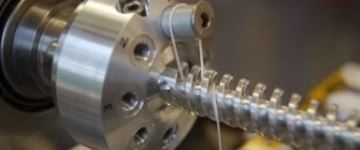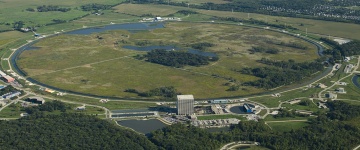Image of the week
Winter wonder labIt’s been a snowy winter in the Chicago, Illinois area. A Fermilab cooling pond has begun icing over. Wilson Hall stands in the background. |
In the News
- From Nature News 11 January 2011 Tevatron faces final curtain Depending on who you talk to, it is either a disappointing blow or a clean break heralding an exciting new era. After much debate, officials at the US Department of Energy’s Office of Science revealed this week that they have decided not to extend funding for the Tevatron, the proton–antiproton collider at Fermilab in Batavia, Illinois, by an additional three years.
- From BBC News 11 January 2011 Antimatter caught streaming from thunderstorms on Earth A space telescope has accidentally spotted thunderstorms on Earth producing beams of antimatter.
-
From Scientific American
6 January 2011
New Subatomic Particle Could Help Explain the Mystery of Dark Matter
…Sterile neutrinos don’t even interact with ordinary matter via the weak force, the ephemeral hook that connects neutrinos to the everyday world. Recently, however, new experiments have revealed tantalizing evidence that sterile neutrinos are not only real but common.
Copyright © 2025 ILC International Development Team




